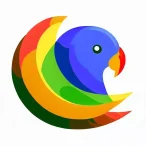It’s pretty hard not to notice all the recent fuss about ADHD. With the advent of TikTok during the pandemic and the rise of mental health awareness generally in these past two decades, the condition certainly is having its time in the sun.
My personal story with it began in 2010 while working as practice manager for Solution Focus Psychology. I was a single mother with two daughters of 15 and 9, and I had just attended parent teacher night for my eldest in year 10. My ex-husband and I sat there puzzled as the English teacher quizzed us on the reasons why a previously high achieving student suddenly was only getting 28% as her yearly mark.
The answer manifested soon after during my day to day work activities.
I was typing up an ADHD list and description of symptoms associated with the different types of the condition, and I had a lightbulb moment. It was like reading my daughter’s school report, “daydreaming, lacks focus.”
I consulted with my then employer Francesca Harvey MAPS, who is a senior psychologist specialising in ADHD. She suggested I complete a Connors Parental Rating Scale and it pointed toward a probable diagnosis of ADHD, type Inattentive. I knew what to do from then on, having seen many other families bring their children and teens in for assessment and treatment over the years.
I made an appointment for assessment at Sydney Developmental Centre for both of my daughters, knowing the condition was genetic and I realised I needed to face the possibility that they’d both need intervention and treatment.
Luckily, one of my daughters saw Dr Mark Selikowitz and the other saw Dr Rory McCarthy, both leading developmental pediatricians in the diagnosis of neuro-diverse conditions. Their IQ’s were assessed using the WISC-IV test of intelligence and their neurophysiological assessments on their QEEG results showed significant excess beta wave activity. Recommendations were made for stimulant medication and behavioural management therapy.
I bought my younger daughter a lovely book called ‘All Dogs Have ADHD’ by Kathy Hoopman. We used it a lot at work, and it was a gentle way of introducing the concept of the condition to parents and children alike. To this day I cannot pick it up and read it without getting emotional. But knowledge is power. Once you know, you can concentrate on helping your child move into the future and be their best possible self.
I kept an old handout from the filing cabinet from all those years ago. It’s called ‘101 Tips for Managing your ADD’ and it’s been compiled from a 1996 book by Dr Lynn Weiss called ‘ADD on the Job’.
Here are my favourite tips:
- You can heal your past hurts and use your experience to help others. You are needed.
- You are valuable.
- The world is a better place because of you.
This blog post has been inspired by my daughter who failed English all those years ago and who recently commented on the flood of TikTok diagnoses of ADHD, saying “now everybody reckons they have ADHD”.
I reminded her of how expensive and difficult diagnosis and treatment was then and still is nowadays. How I was so lucky to have been working in that very area of healthcare to fast-track diagnosis and to have had behavioural support from my colleagues at a discounted rate for both her and her sister. And how a missed diagnosis can have disastrous lifelong consequences.
She paused, and then said to me, “thank you so much Mamma, for all that you did for us”.
I know how challenging it can be to get a diagnosis of ADHD for your child or teen, how daunting it is to seek professional help and how difficult it can be regarding the costs of accessing support.
I also understand the emotional rollercoaster that accompanies that diagnosis.
If you are in that position, I wish you all the very best. If you need support, please consider reaching out for help. As the metaphor of the oxygen mask illustrates so clearly, your own self care is a critical step in maintaining the ability to support and care for your child.
